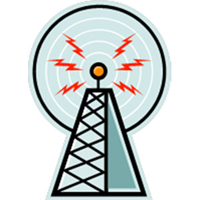An informed community means the difference between having the community support a school district needs to thrive or having to regularly struggle for resources in order to promote excellent student learning.
Throughout the course of a busy day, expecting an administrative team to remember to tell the community about the great student learning taking place in your schools can take a back seat to focusing on the day-to-day operations.

Having an effective, thoughtful, and implemented communications plan means your community will know about the hard work and investment of your staff and teachers, plus, when your district needs support, whether that means passing a bond or just getting volunteers – your community will show up.
 What do you tell your audience?
What do you tell your audience?
For school districts and any organization, transparency is instrumental. Transparency is a popular buzzword these days that may be overused, but at its basic level, transparency means your constituents can find out what they want to know about your organization without having to cut through miles of red tape. Your audience may not want to know how you spend every penny (although don’t underestimate the possibility that some of them might want that information), but they do want summaries, overviews, and informative updates.
The mistake many organizations make is assuming their audience knows more than they do about the organization. Being modest or too shy to boast about great accomplishments makes for a good personality trait in a person, but, for companies, they need to let the world know when amazing accomplishments happen in any and every way possible.
 How do you reach your audience?
How do you reach your audience?
Remember to utilize all the different ways to reach your audience. Mailings, like newsletters, reports or postcards, may be effective with certain members of your audience while others will prefer reading or hearing about your news from electronic means including the organization’s website and social networking accounts.
Let’s be clear about social networking – it is no longer optional. With over one billion active daily users, Facebook has become a primary method for members of almost every audience to receive news about their friends, family, their schools, favorite companies, and brands. Every school district and organization needs to have a Facebook account regardless of the district’s size.
However, even with new electronic communication methods growing in popularity, every organization cannot forget to utilize traditional forms of reaching their audience; people still read newsletters, newspapers, and mailings. An effective and comprehensive communication plan includes a variety of media from traditional to cutting-edge.
 When do you talk to your audience?
When do you talk to your audience?
School districts need to continually and regularly communicate with their community. Communication should be consistent and predictable. The most effective communication plans include annual, monthly, quarterly, weekly, and even daily messages. For example, your school district might mail out a printed quarterly newsletter with in-depth stories about what’s happening in the community’s schools, but the district should also post shorter blurbs on a weekly or daily basis using social networks like Facebook or Twitter.
Remember: your district needs to remain consistent. If you tell your audience you will keep them informed on a weekly basis, be sure to do so. If you don’t have the resources to communicate every week, don’t promise that you will – you want to make sure your audience knows when to expect new information and how they can get it.
 Do you need help planning your communication strategy?
Do you need help planning your communication strategy?
We encourage you to contact us and learn more by visiting our Facebook (www.fb.com/edTactics) or Twitter accounts (www.twitter.com/edTactics). edTactics will provide you with our experience and expertise so you can focus on what matters – student learning.
